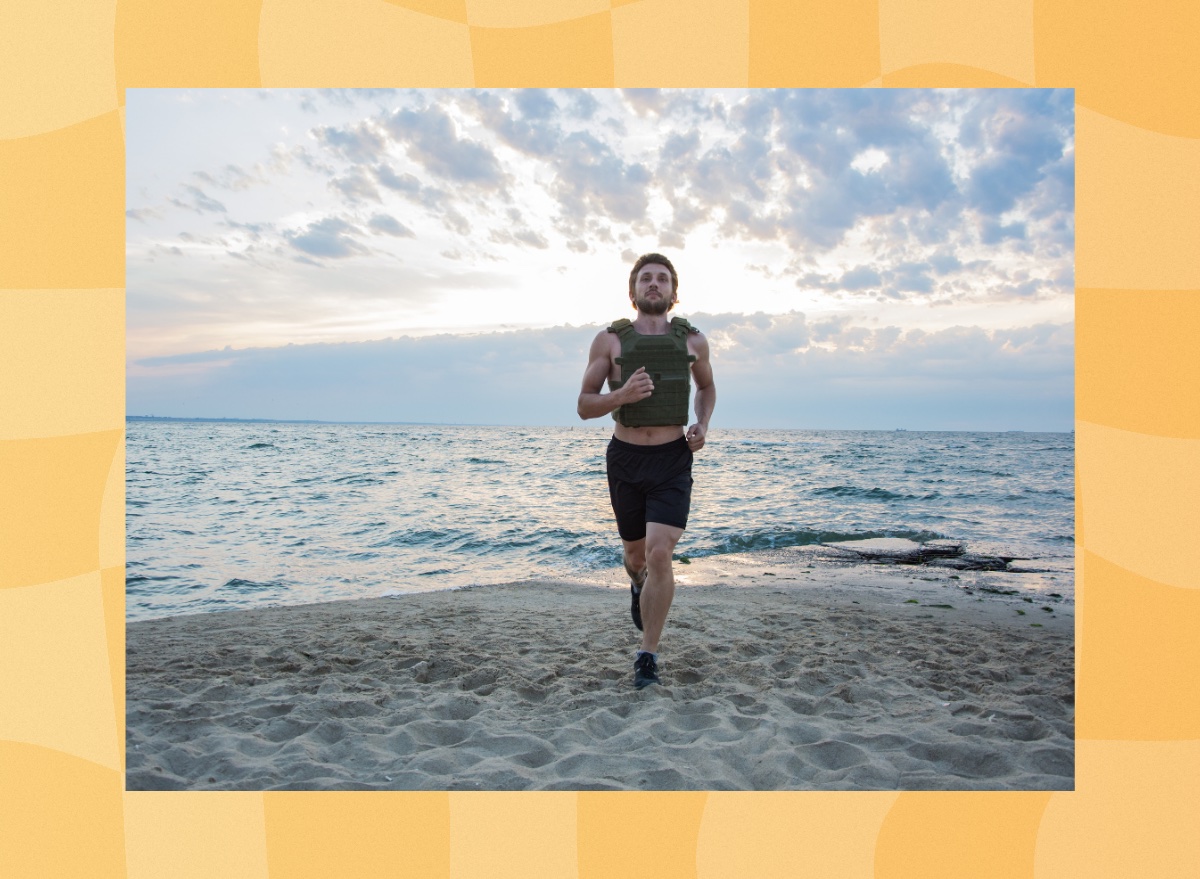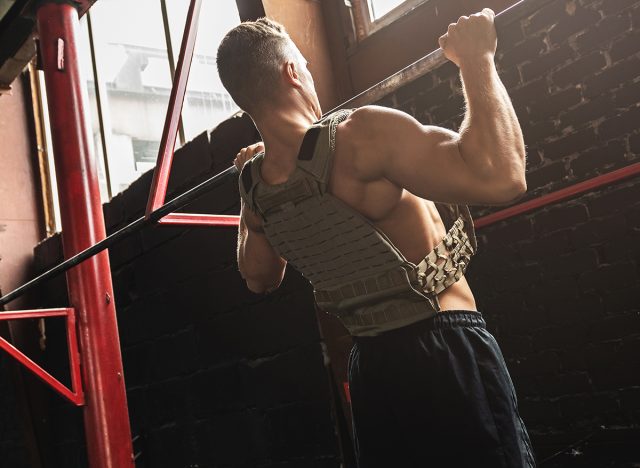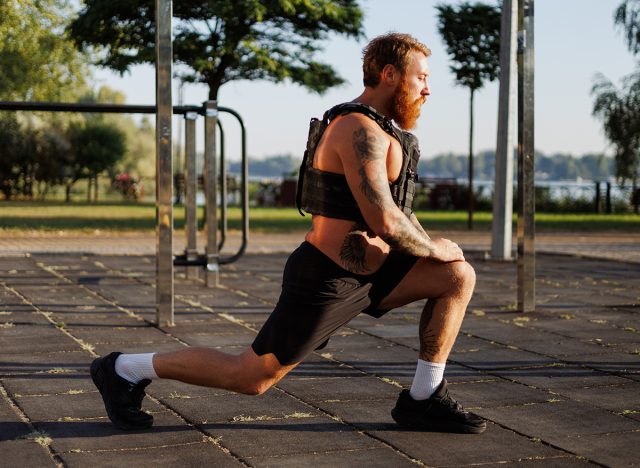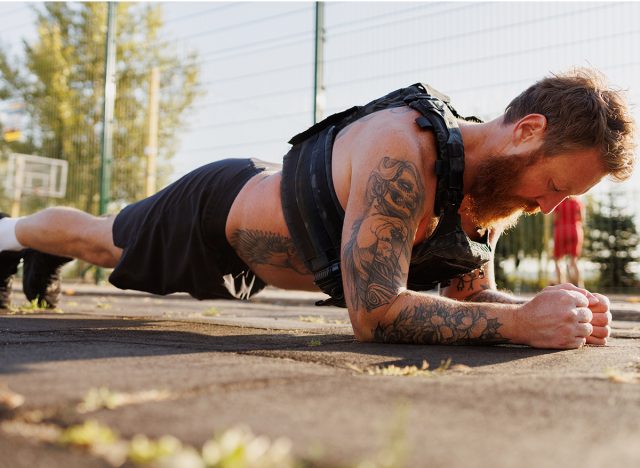I Wore a Weighted Vest for Every Workout for 2 Weeks—Here's How It Transformed My Fitness

I thought I was fit. Then I strapped on 20 pounds and tried to do push-ups.
It didn't take long to realize the weighted vest wasn't messing around. From the first set of push-ups to the last plank of the week, every movement demanded more strength, more balance, and way more grit.
I've always leaned into bodyweight workouts, whether I'm training in a park, a garage gym, or on the go during travel. However, I wanted to increase the intensity without adding fancy equipment. That's when I reached for my weighted vest.
For two weeks, I wore it for every single workout. Strength circuits. Core finishers. HIIT sessions. Even warm-ups. Here's what I did, how it felt, and the surprising changes I noticed in just 14 days.
Why I Trained With a Weighted Vest
I needed a jolt. My workouts were solid, consisting of bodyweight strength circuits, core drills, and conditioning finishers, but they started to feel too familiar. I wasn't coasting, but I also wasn't leveling up. I needed a way to crank up the intensity without complicating my routine.
What makes the vest so effective is its simplicity. You wear it, and suddenly every movement becomes harder. Your heart rate spikes faster. Your muscles have to grind through reps. Your lungs work harder to keep up. It turns squats, lunges, and push-ups into full-body tests.
But the best part? It doesn't mess with your mechanics. You're still moving naturally, just under more load. That's huge for bodyweight training, where good form drives results. You can layer resistance without needing to pick up a barbell or dumbbell.
I loved its versatility. I could throw it on for a quick circuit, wear it for a walk, or power through a core workout with it strapped tight. It forced my body to work harder, but it never felt like overkill. That made it the perfect tool to break through a plateau and challenge myself in a new way.
The Workouts I Did With the Weighted Vest
I hit full-body strength, cardio conditioning, and core with a mix of bodyweight and TRX-based workouts. I kept the sessions intense but straightforward. Here are three of the workouts I rotated through:
Workout: Weighted Vest Strength Circuit

Goal: Build total-body strength with a core focus
Gear: Weighted vest, pull-up bar, TRX (optional)
Circuit: 3-4 Rounds
- Pull-ups: 6 to 8 reps
- Weighted Push-ups: 10 to 12 reps
- TRX Rows: 8 to 10 reps
- Bulgarian Split Squats: 8 reps per leg
- Glute Bridges (vest across your hips): 12 reps
- Plank with Shoulder Taps: 30 seconds
Rest: 60 to 90 seconds between rounds.
This workout torched my upper back, chest, glutes, and core. The vest made pull-ups and push-ups feel twice as hard, and holding a stable plank was even more challenging. Brutal.
Workout: Full-Body Cardio Burner

Goal: Boost conditioning and muscular endurance
Gear: Weighted vest, timer
Structure: 20-Minute EMOM (Every Minute on the Minute)
Odd Minutes:
- Jump Squats: 10 reps
- Mountain Climbers: 20 total
Even Minutes:
- Reverse Lunges: 12 reps total
- Push-ups: 8 to 10 reps
Finisher (No Vest):
- High Knees: 30 seconds
- Burpees: 10 reps
This session quickly spiked my heart rate. The vest added intensity without needing extra rounds. My legs burned, and my lungs had to keep up.
Workout: Core and Conditioning Challenge

Goal: Strengthen your core while keeping the heart rate up
Gear: TRX straps, weighted vest
4 Rounds:
- TRX Plank Hold: 30 seconds
- Weighted Sit-ups: 15 reps
- Walking Lunges: 20 steps
- Push-up to Down Dog: 8 to 10 reps
- Lateral Hops: 20 seconds
- TRX Body Saw or Forearm Plank: 30 seconds
Core Finisher (No Vest):
- Hollow Hold: 30 seconds
- Flutter Kicks: 20 reps
My core lit up from the first round. Adding the vest made every plank and sit-up feel like a weighted crunch. By the end, I felt strong, dialed in, and spent.
How It Felt After Week One
The soreness hit differently. Push-ups felt heavier. Planks demanded more balance. Even walking lunges turned into a mental test.
However, what surprised me was that I started moving better. My body adapted quickly. My push-up form tightened up. My core stayed engaged without me thinking about it. Even my posture improved.
I noticed the changes most during regular, unloaded movements. Walking upstairs felt easier. Regular planks felt like recovery. The vest forced me to level up, and I could feel the gains happening fast.
What Changed After Two Weeks
Two weeks in, my fitness felt sharper across the board. Here's what stood out:
- My core got stronger: Every exercise turned into a core workout. The vest challenged me to stay braced and balanced.
- Push-ups and pull-ups improved: After struggling in week one, I was able to complete the same reps by week two.
- Cardio conditioning leveled up: I recovered faster between sets, even in high-intensity workouts.
- Mental toughness kicked in: There were no shortcuts. The vest forced me to push through fatigue and finish strong.
How I'll Keep Using the Weighted Vest
Now that I've felt what this vest can do, it's staying in my lineup. I'm not going to wear it for every workout, but I've got a clear game plan for when to strap it on.
- Bodyweight Strength Days: Push-ups, pull-ups, squats, lunges—when it's just me versus gravity, the vest cranks up the challenge. Every rep hits harder and demands more control.
- Conditioning Circuits & Finishers: Full-body circuits with minimal rest get a major intensity upgrade with the vest. It turns basic movements into serious tests of grit.
- Weighted Walks & Rucking: When I want a lower-impact cardio session that still torches calories, I'll throw on the vest for walks, hikes, or treadmill incline climbs.
- Core Training: Planks, mountain climbers, TRX holds—the vest takes stability work to another level. That extra load forces deeper engagement and serious core control.
- Travel or Minimal-Equipment Workouts: No weights? No problem. With the vest, even a short hotel-room circuit becomes a burner. It's my go-to for staying sharp on the road.
- Active Recovery Days (With a Twist): I won't go all-out, but I'll wear a lighter vest during light circuits or mobility flows to sneak in extra effort without crushing recovery.
Where I won't use it: sprints, heavy lifting sessions, or Olympic-style lifts. The vest adds weight, but not the kind of stability or mobility those lifts demand.









